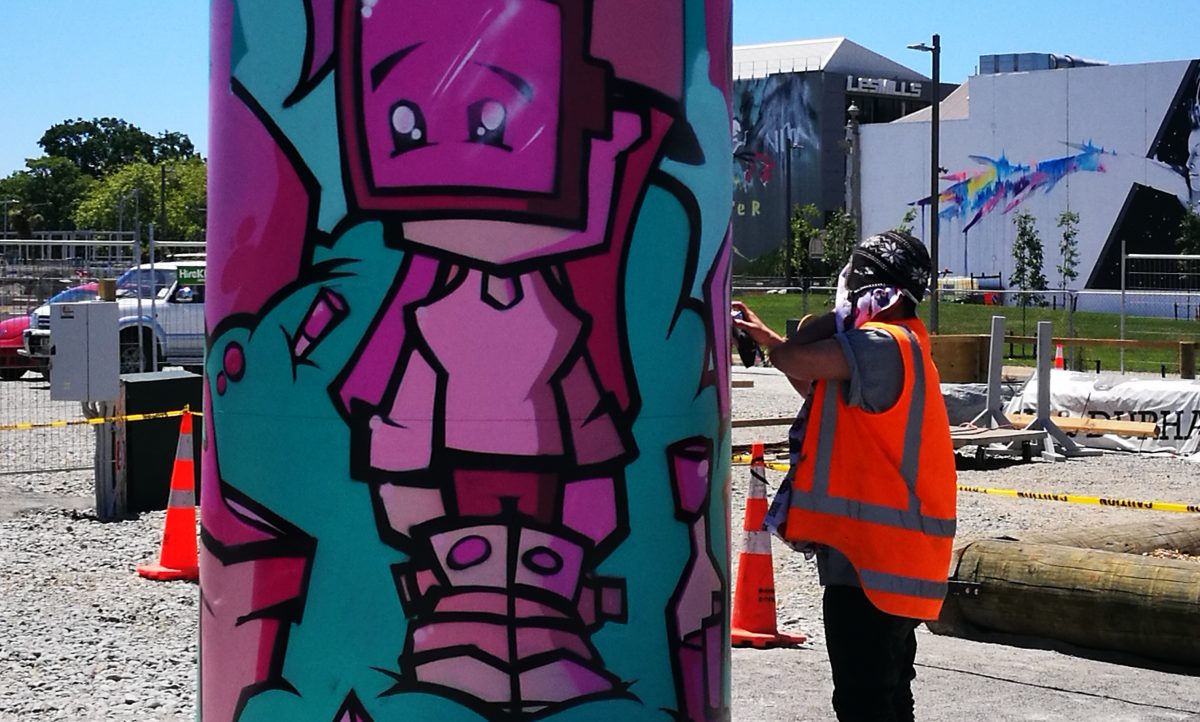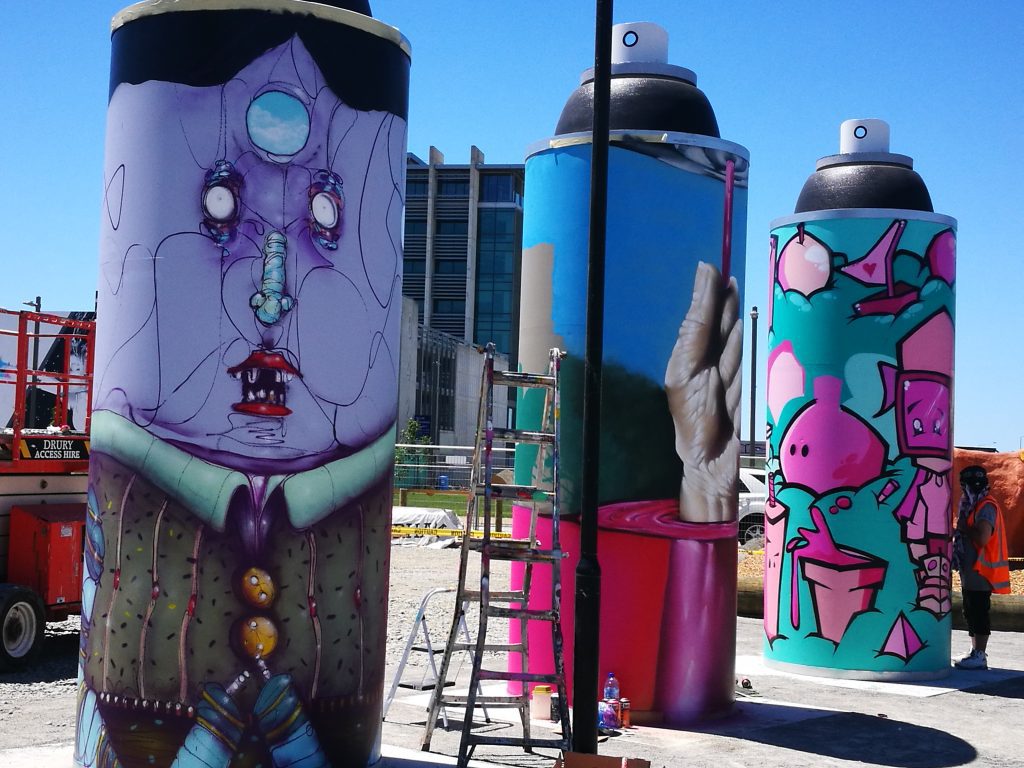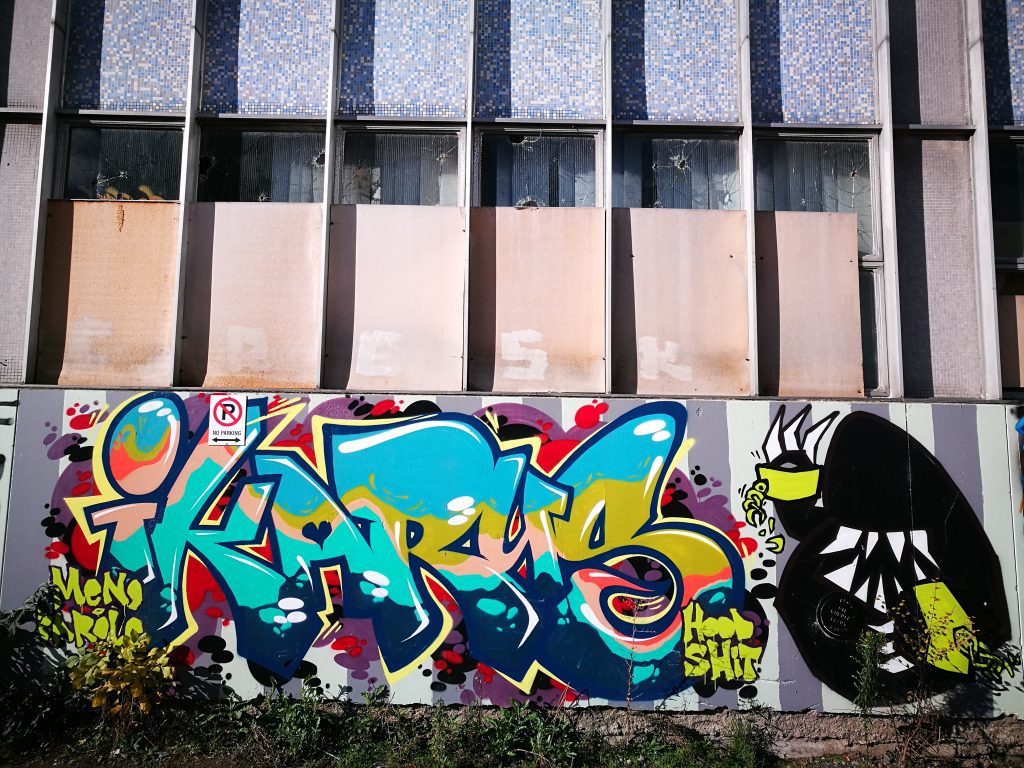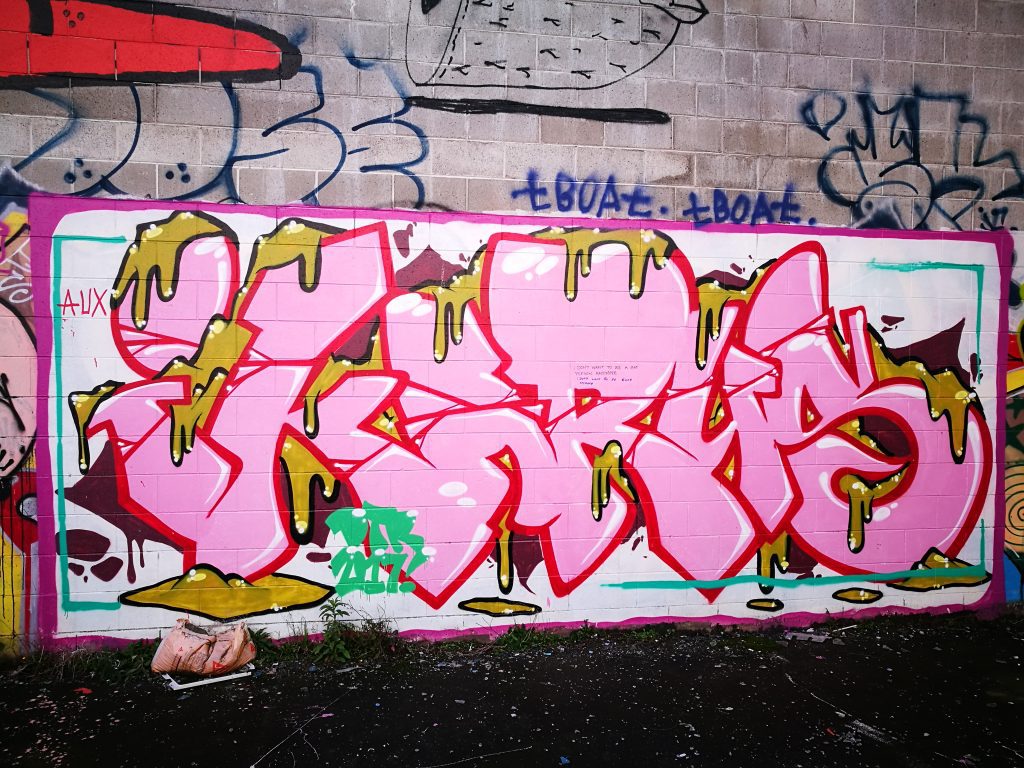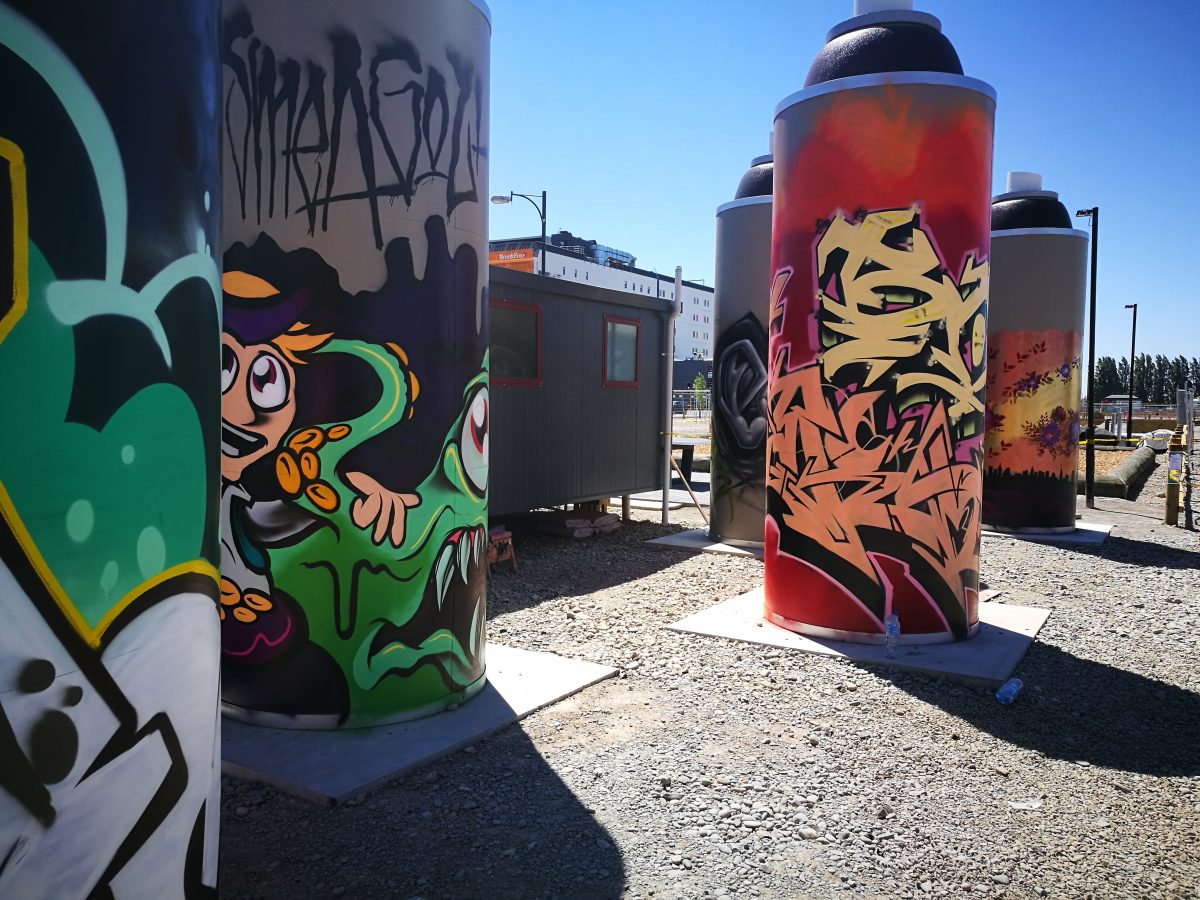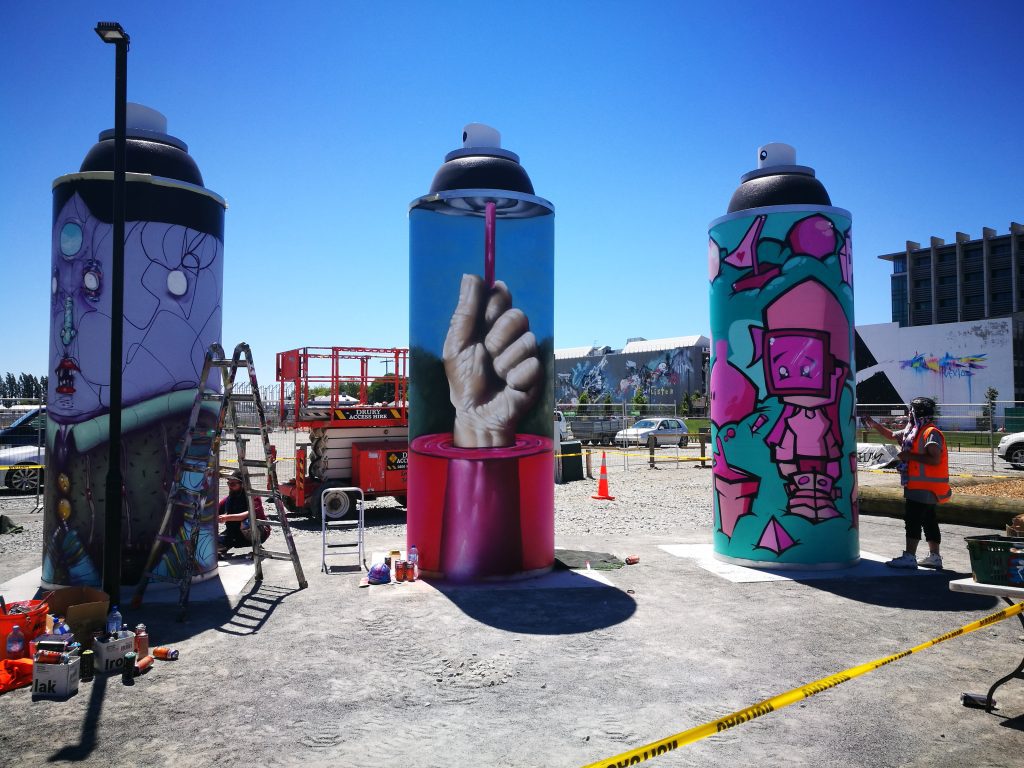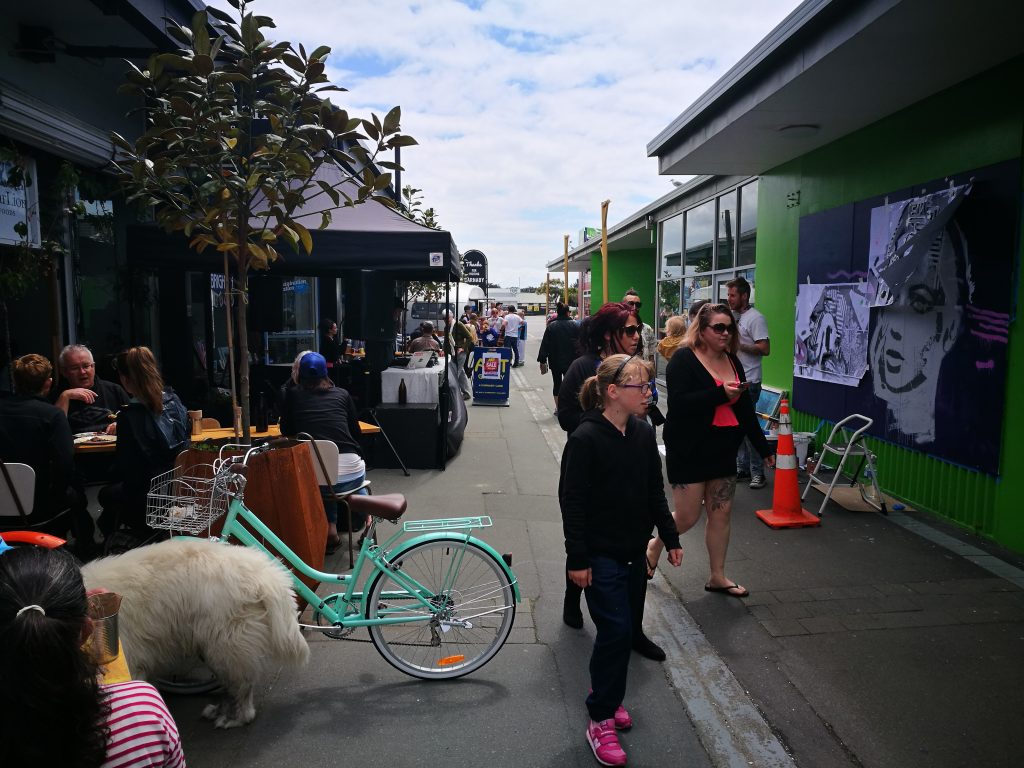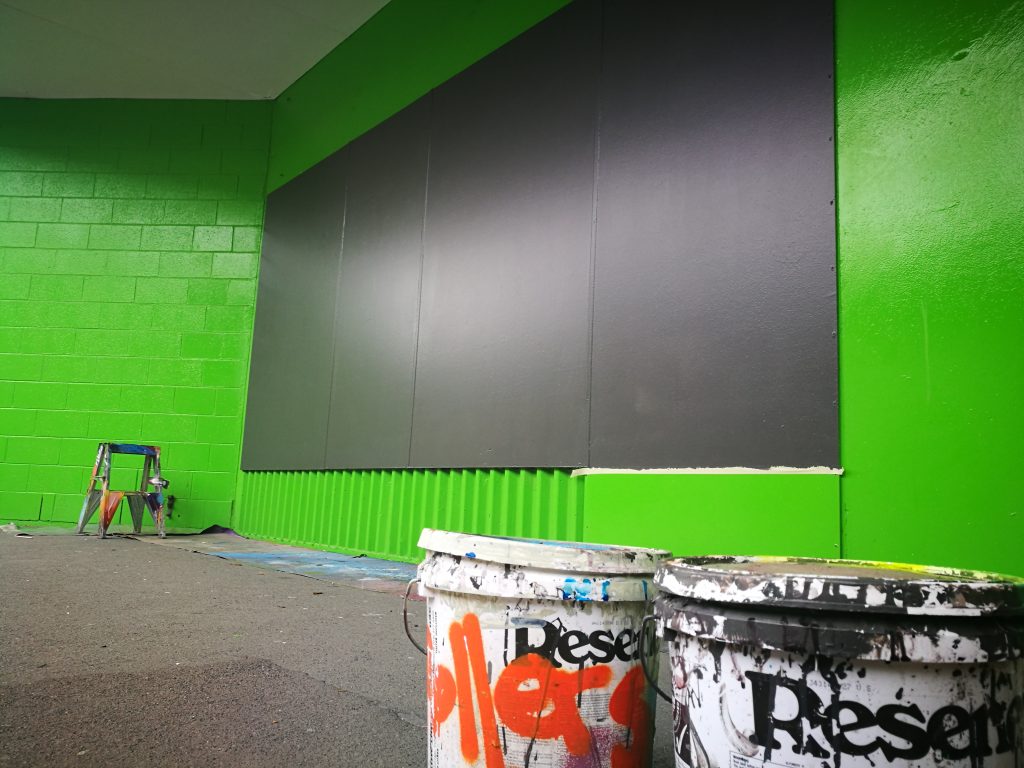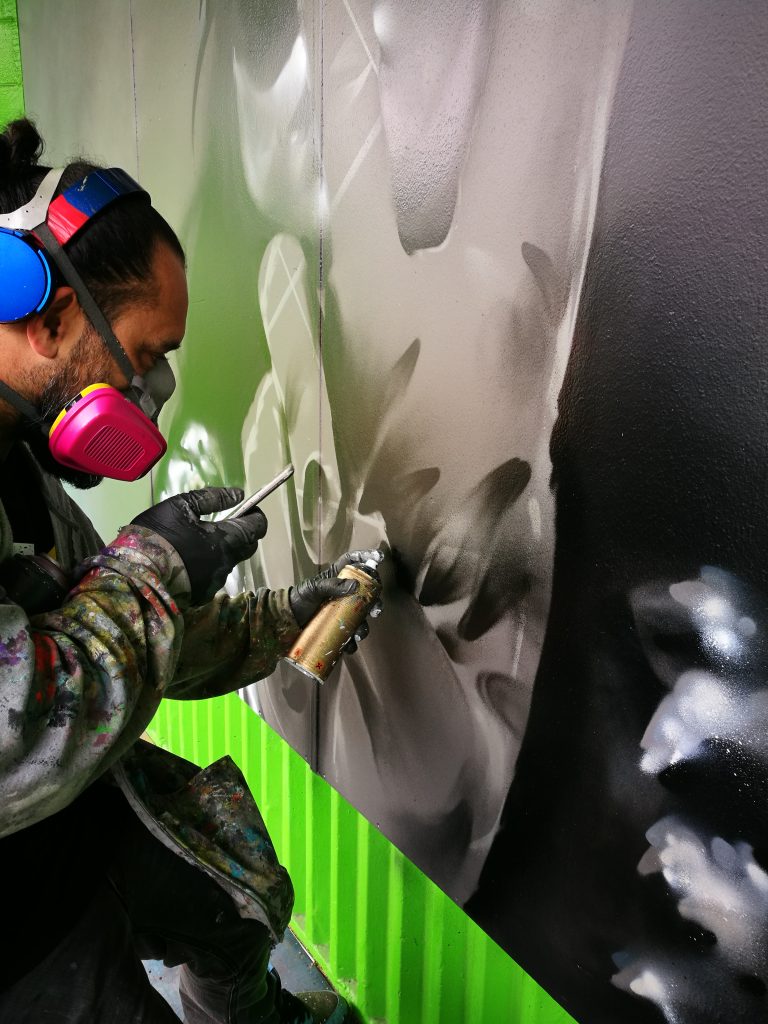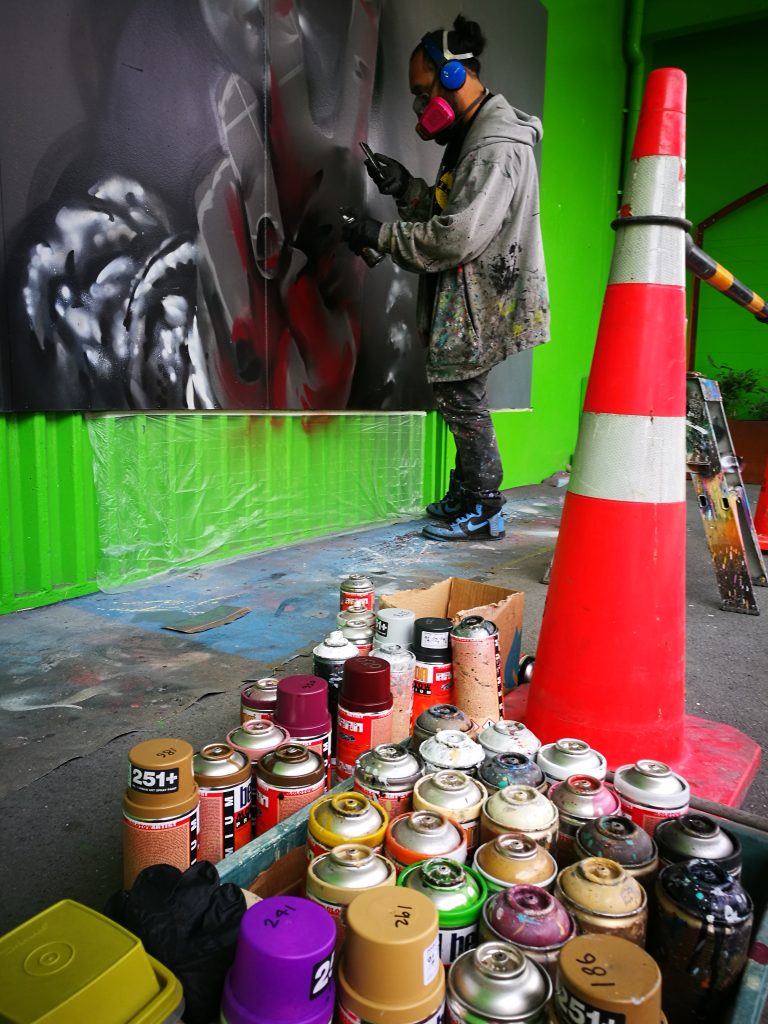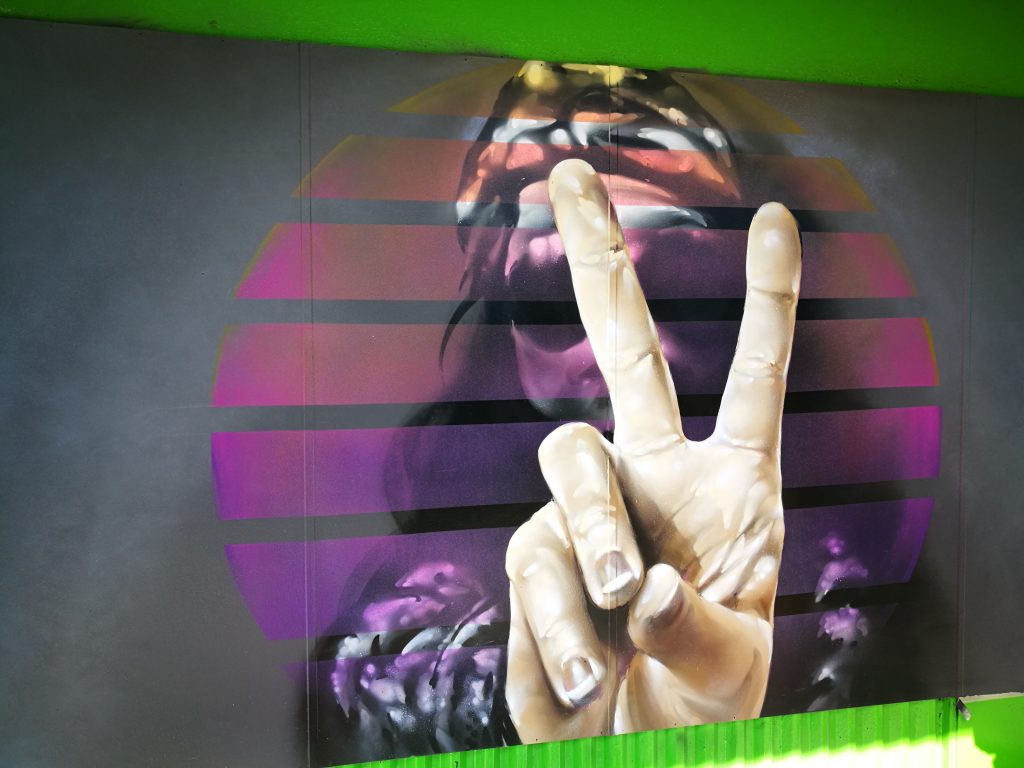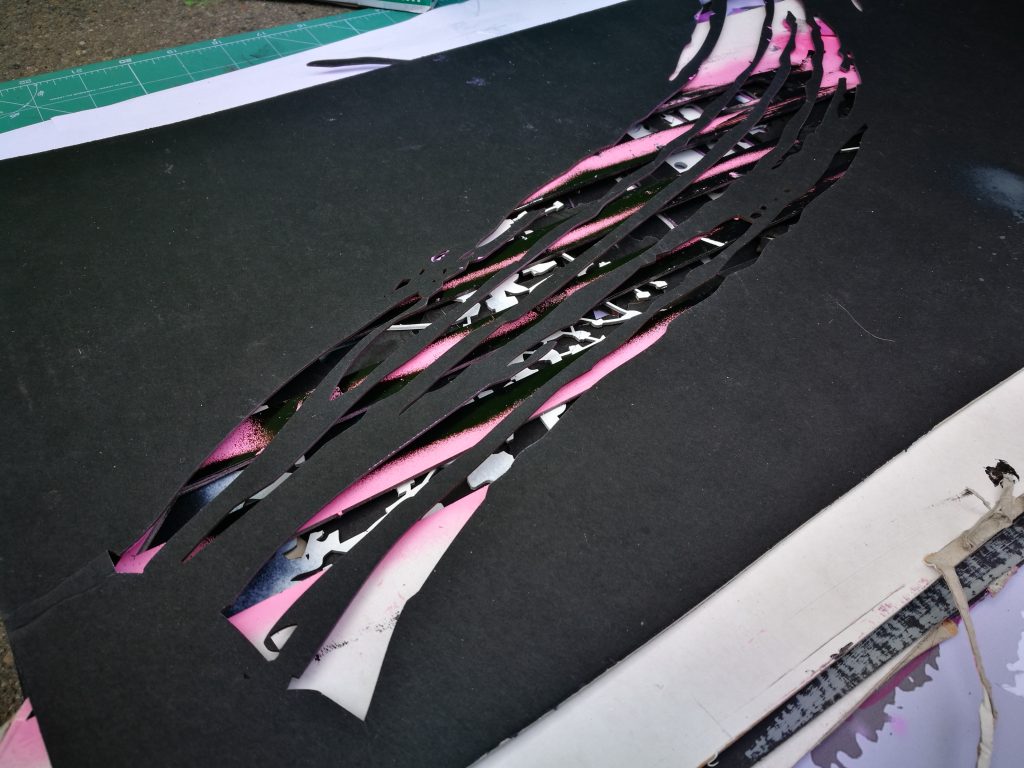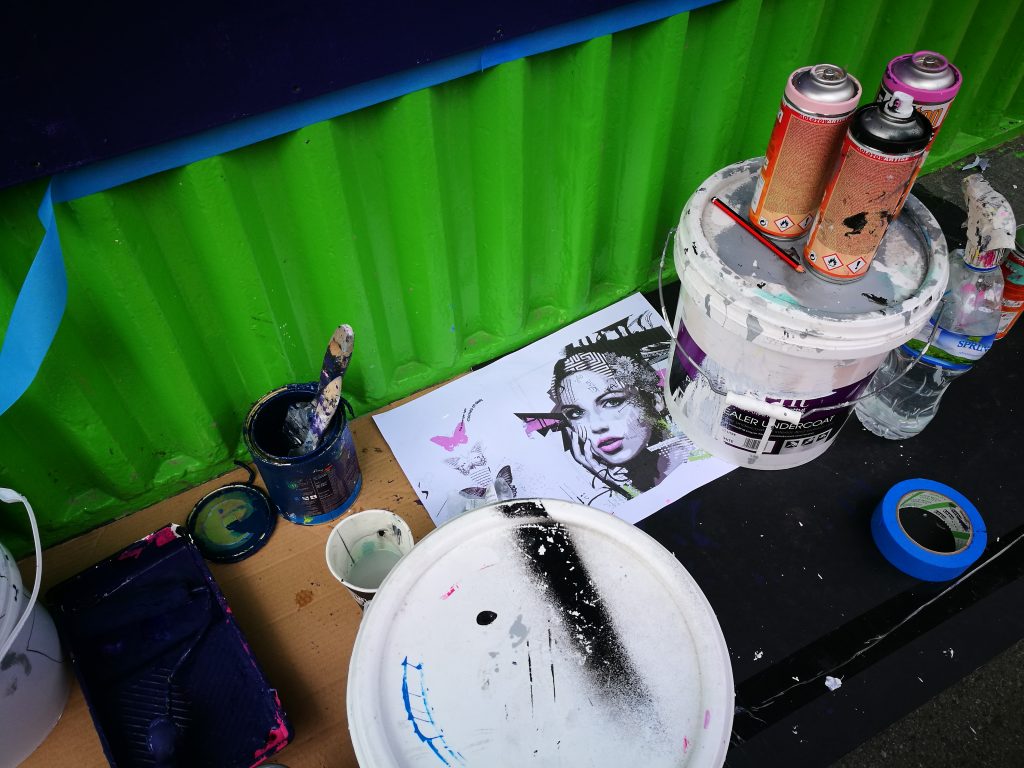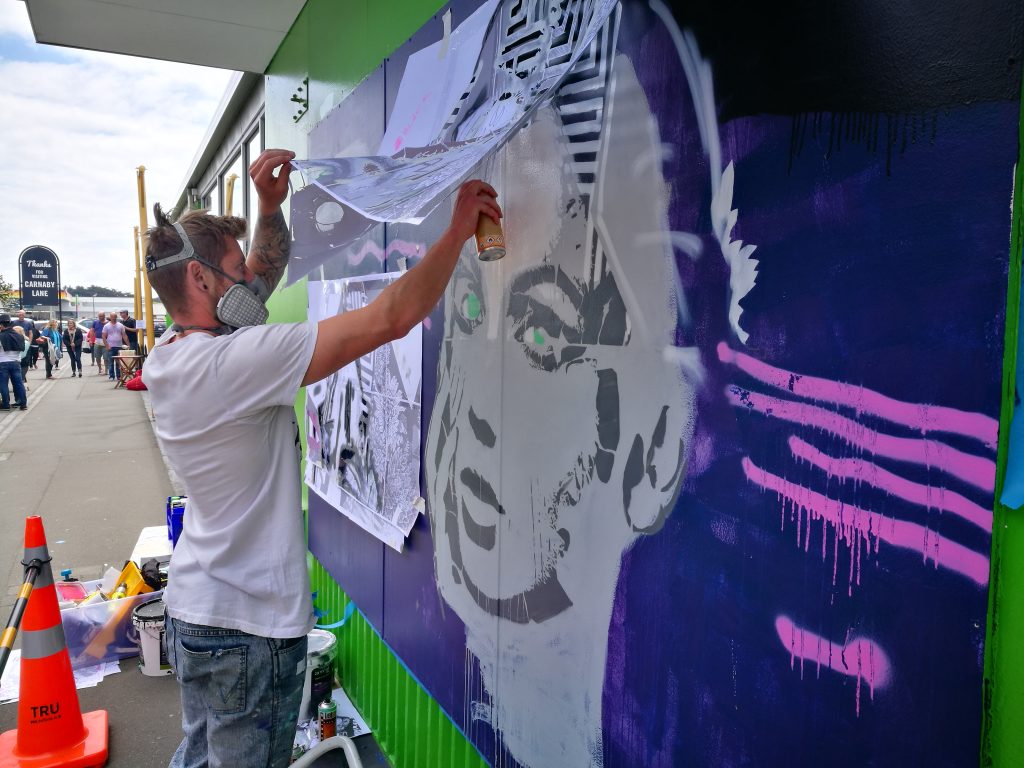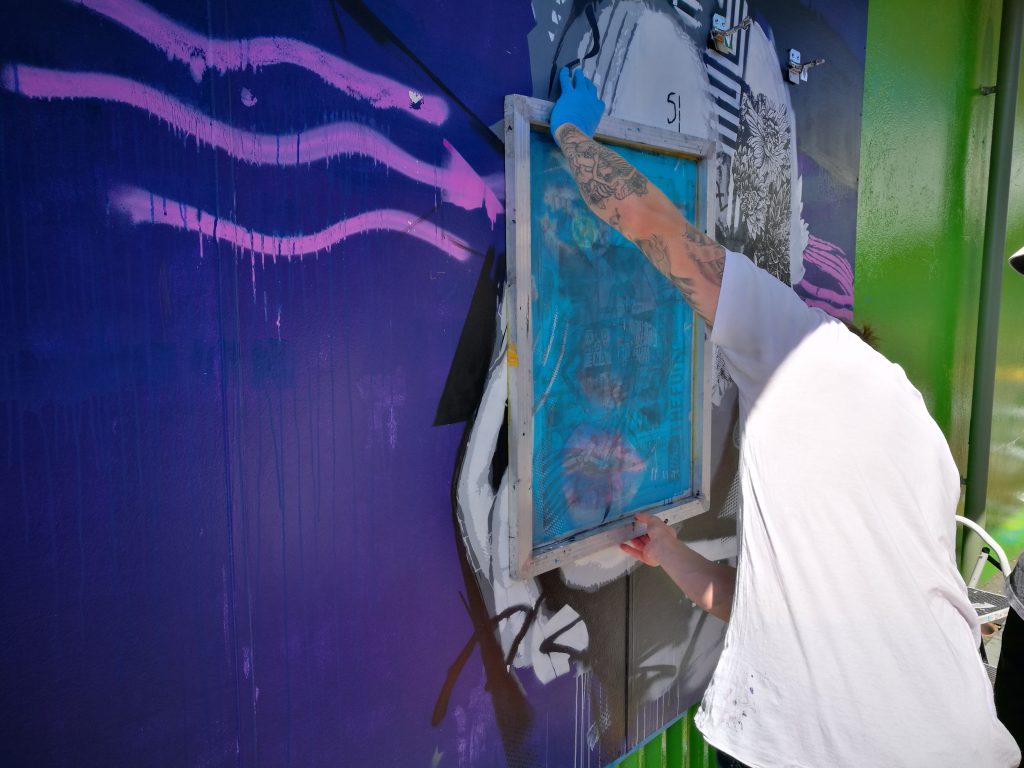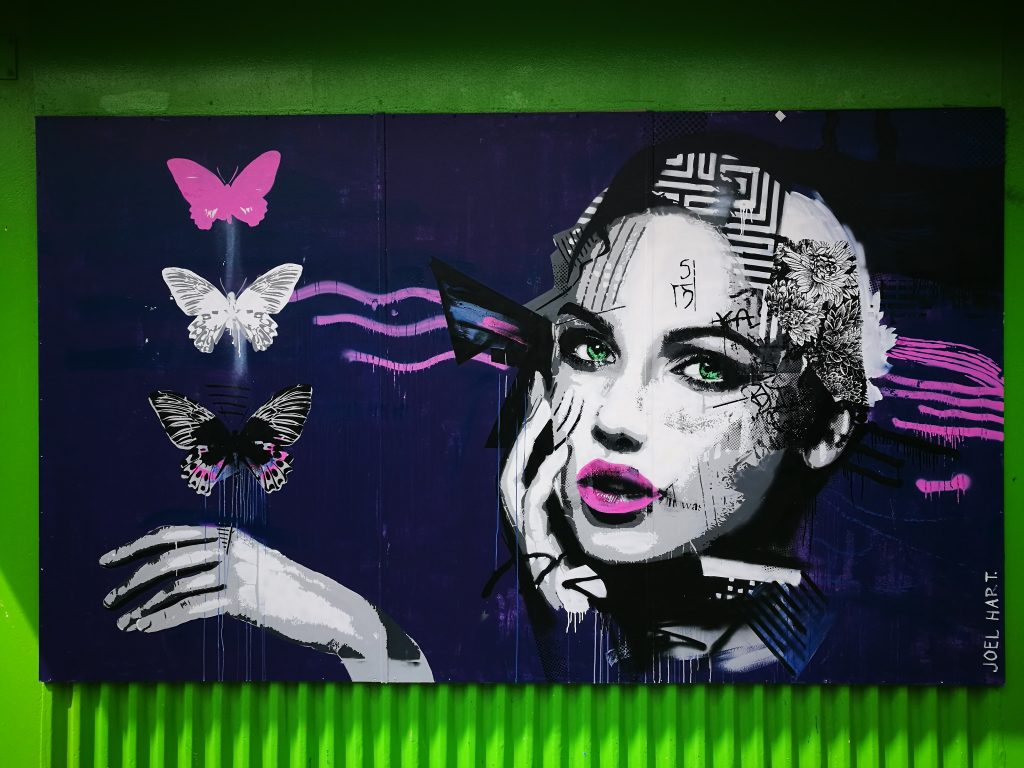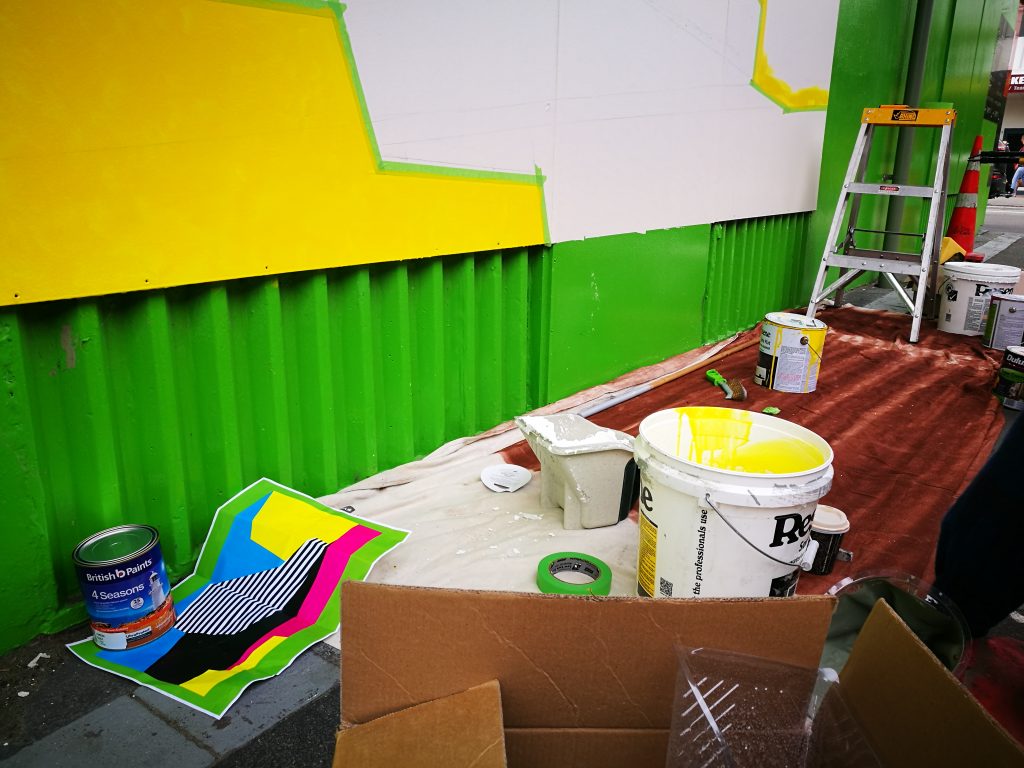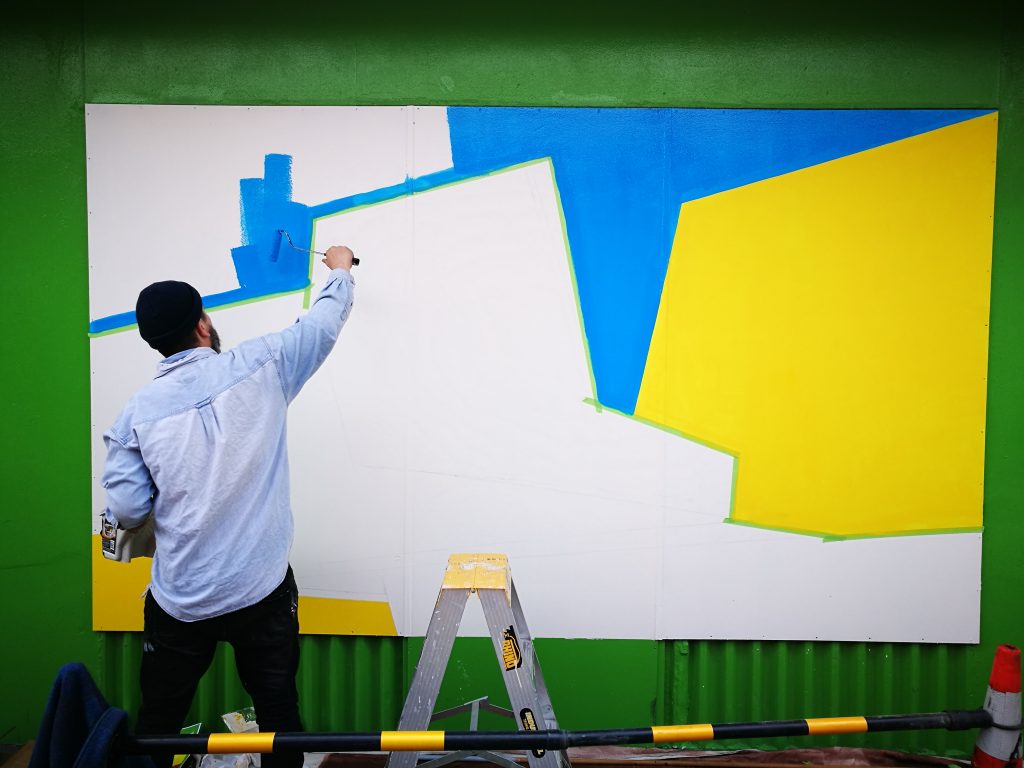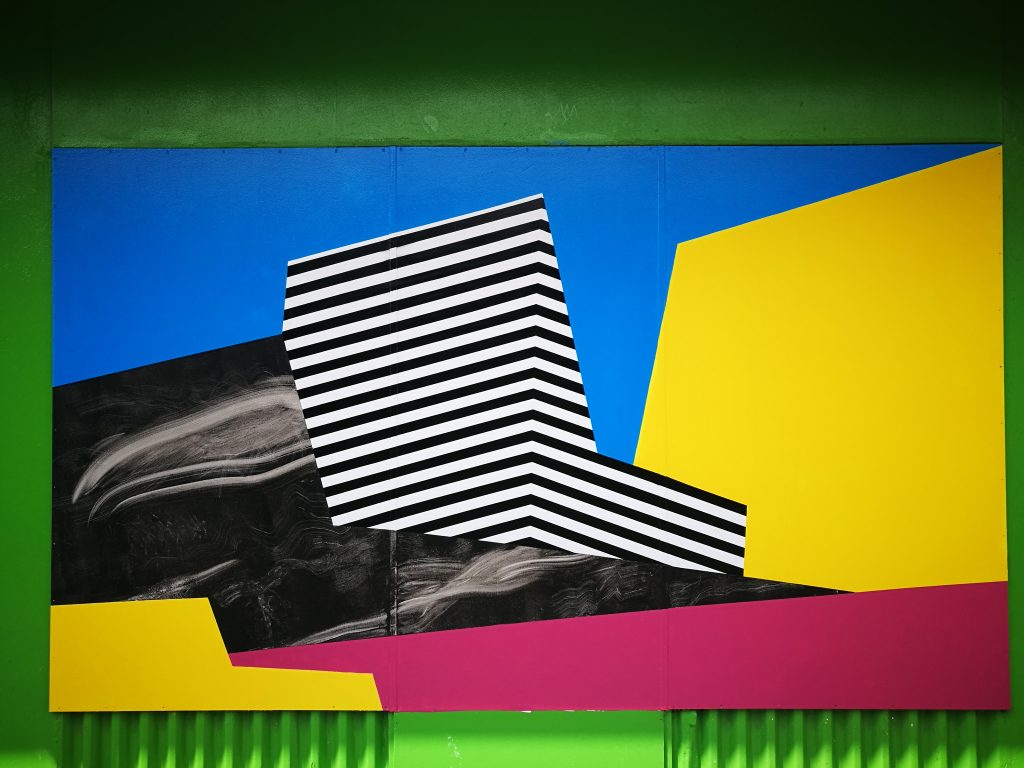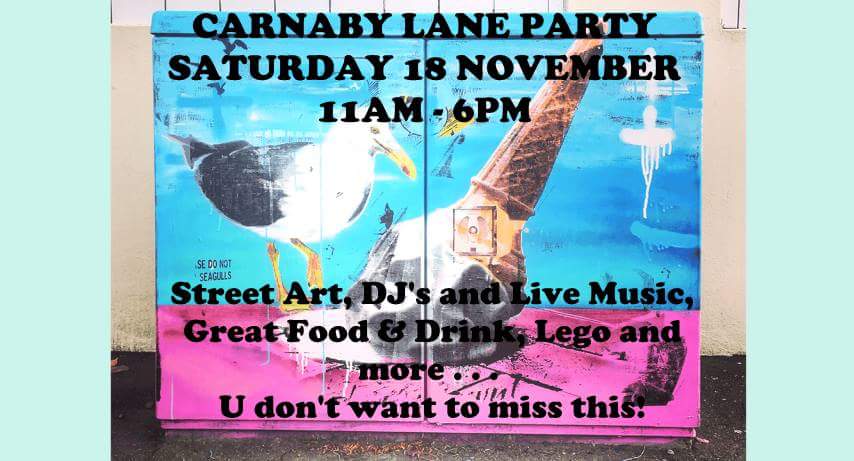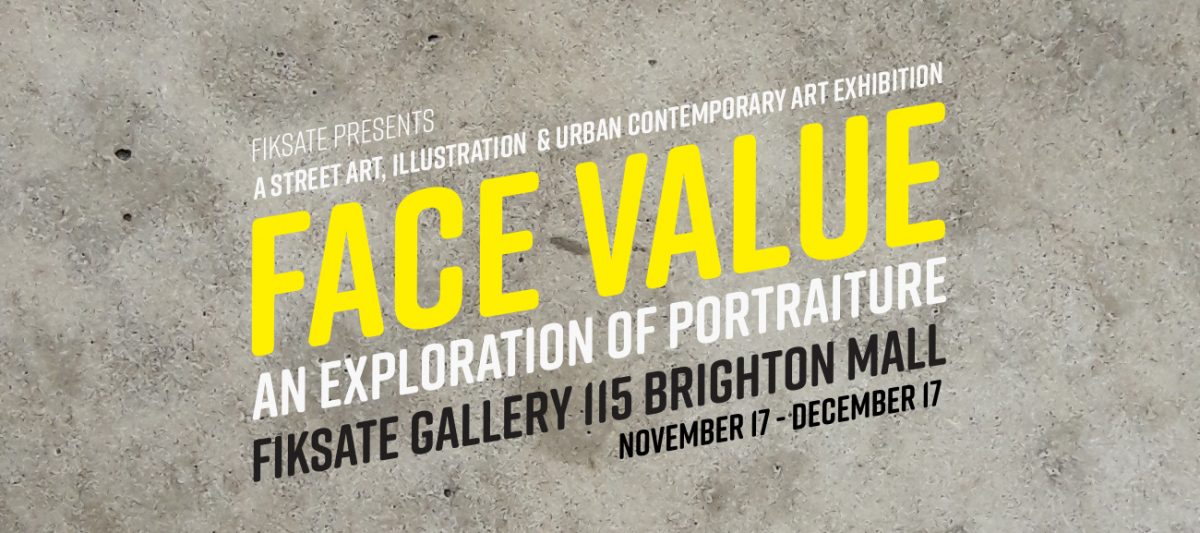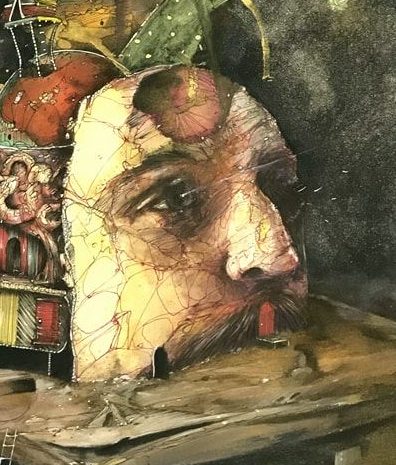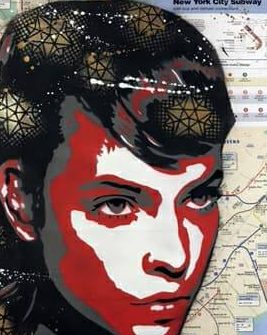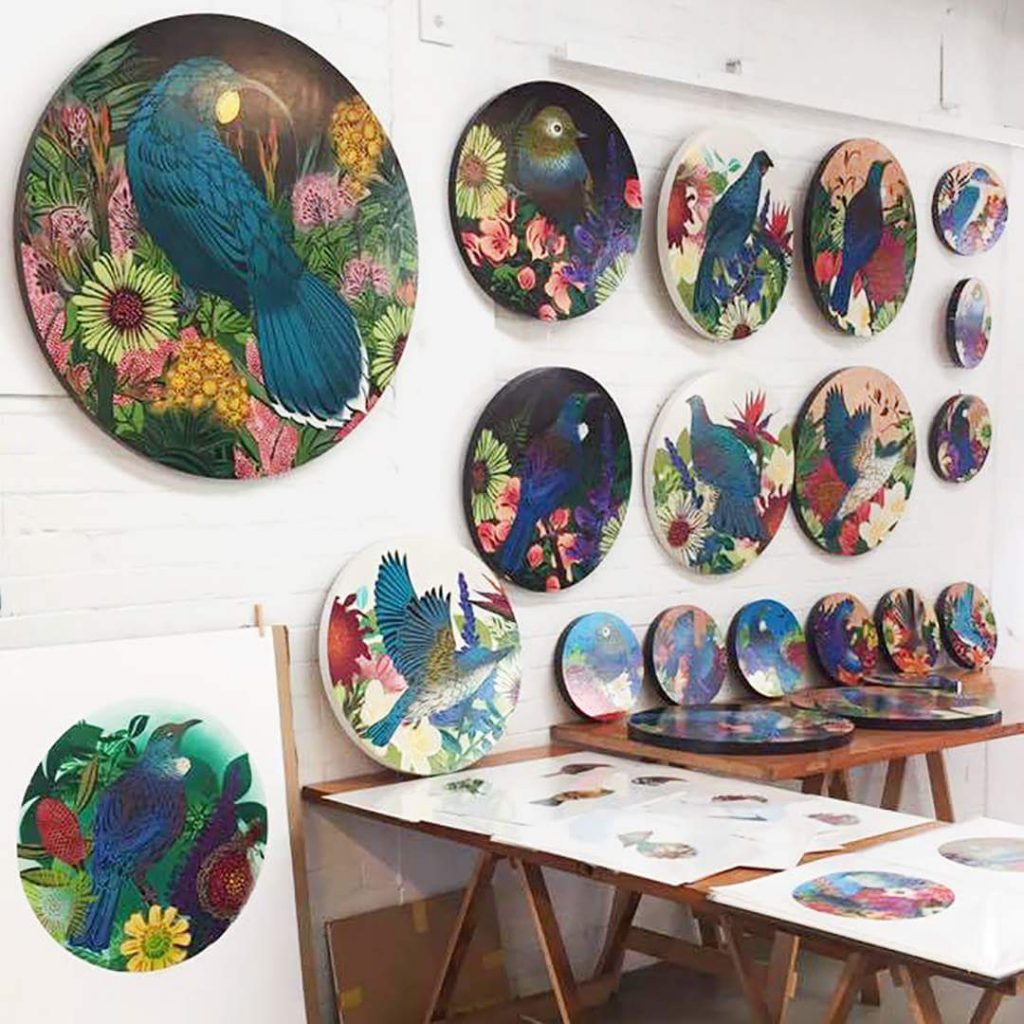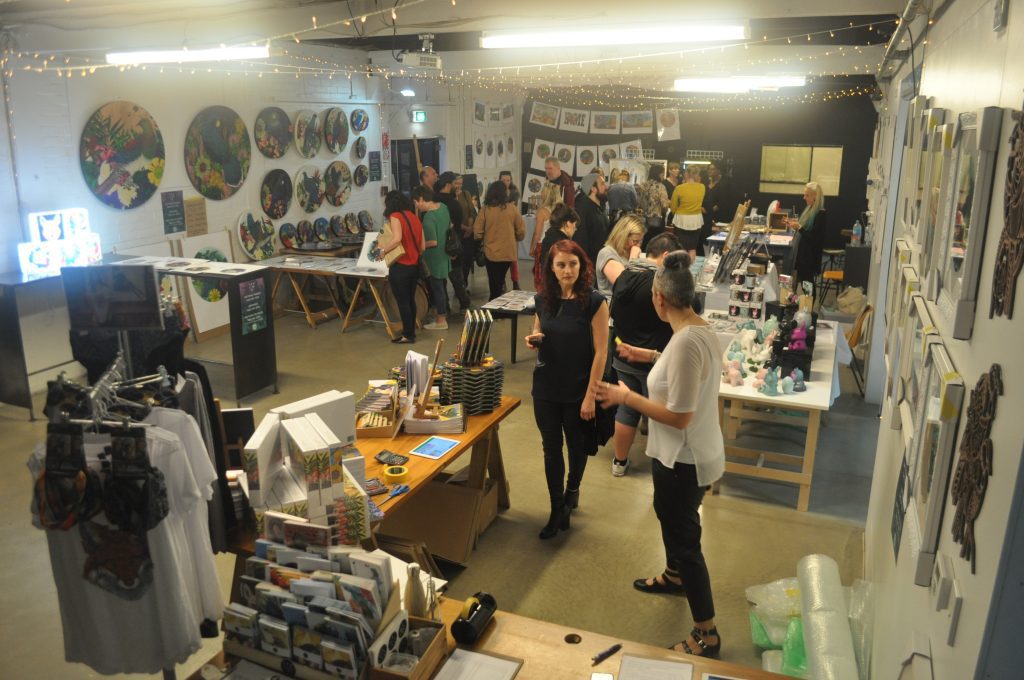Napier artist Cinzah has a calm, relaxed demeanour. But that laid-back manner belies his busy schedule. The artist, whose work spans muralism, fine art, illustration and beyond (in 2012, along with his friend, filmmaker Karl Sheridan, Cinzah produced Dregs, the first feature-length documentary film about the New Zealand street art scene), is a regular in festivals around New Zealand, Australia and further afield, exhibits his studio work, completes commercial commissions, and in addition serves as the regional director for the Sea Walls New Zealand mural festival, working with the international PangeaSeed Foundation, a not-for-profit ocean conservation organisation. Add to the mix a young family, and you get the feeling that you might be able to do more with your time.
I first met Cinzah in 2012 while he was shooting through Christchurch on his way to Dunedin to film for Dregs. I was able to hang out, watching while he painted a wall in a dishevelled post-quake New Brighton well into the night. Some five years later, we were able to catch up as he painted another wall in New Brighton, this time for the event Street Prints Ōtautahi. There was a fitting quality to his Street Prints station, returning to the seaside village, but this time under very different conditions and surroundings. We sat down at a rowdy suburban pub, and between bursts of classic rock cover music, reflected on Cinzah’s varied experiences, his distinctive style, and the street art and mural culture in Aotearoa…
So, Cinzah, like many of the other Street Prints Ōtautahi artists, it has been a pretty busy few weeks, you basically arrived in Christchurch straight from the Street Prints Mauao event in Mt Maunganui. With such a hectic schedule have you had a chance to think about the different environments? Although both events come under the Street Prints umbrella, just from a physical point of view, they seem like quite different locations in which to be painting, have you reflected on the change in setting and the distinct qualities of each event?
We kind of all just arrived and hit the ground running. It’s been flat out from Street Prints Mauao up in Tauranga, straight down to Ōtautahi. But yeah there’s definitely differences, in terms of the geographies. Tauranga, Mt Maunganui, it’s a very beachy town, with summer vibes you know, it is very tourist-orientated, whereas down here, the architecture’s completely different, the mix of gothic and Victorian English styles and straight up rubble and construction stands apart from the Mount. Obviously, things are still in repair and there’s a lot that’s still going on, it’s also really interesting to see how the quake and rebuild has affected the local graffiti scene, with the last few years of festival-produced works, large scale commissions as well as the juxtaposition with unconventional, un-commissioned, guerrilla works and interventions, like the array of graffiti. It’s good to see all the different elements of the culture are alive and thriving. There’s basically no graffiti in Mt Maunganui, apart from what we’ve produced over the last few festivals there. (Laughs) So yeah, that’s an immediate difference…
There is an echo for you specifically at least, painting by the sea in New Brighton, you’ve still got the ocean air…
Yeah, exactly, except that it’s arctic! The easterlies are chilling my balls! (Laughs)
Welcome to Christchurch! (Laughs)
Yeah! (Laughs)
There’s also a nice personal narrative for you because in 2012 you painted in New Brighton during a brief stop-over in Christchurch. Looking back, how has the area changed in terms of your personal recollection?
There’s a lot more art. More public works, graffiti, interesting uses of abandoned spaces, some good cafes, and Fiksate Gallery is an awesome little addition to the hood. When I came through in 2012, there were the odd piece around, the main mall was all just shut shops, there was basically nothing open. I started painting one little semi-abando (abandoned building), which had been partly demolished, and I remember one guy coming out, I don’t know if he had one of the businesses there, but he basically gave me permission to paint the entire street: ‘Oh yeah, you can paint here, or you can paint here, you can do this shop or that shop…’ It’s great to see positive changes here, there’s a lot of potential for this neighbourhood, its good to see people inhabiting these spaces and the community taking ownership. New Brighton is heading in a positive direction.

You have a lot of festival experience; do you have a process for getting to know cities and places? Is it just hit the ground running and get a vibe as you go, or do you like to spend a little bit of time exploring before you start painting?
Definitely, if the schedule and life allows, I like to have a day or so on the ground to acclimatise and adjust to my environment and the surroundings. I like to get out within the community and meet people and talk and get a feel for what’s going to work in that environment, what sort of work would suit, depending on what is going on around there, and also just to get a feel for whether the community is supportive. Is art really going to add to that environment or will it detract from things that might be happening there? I usually have a preconceived idea, or concept mocked up before arriving, but I like to allow room for this to breathe, grow and be influenced by my surroundings and experiences that may present themselves.
There is a definite responsibility, right? It feels as though within the muralism movement there is a growing recognition of the need to respect and engage with locations and the communities, not just the people, but with the local cultural, social and even spiritual histories and narratives. Have you found your thinking around these issues has had to grow as you’ve been more involved in events? You offer an important perspective as both an artist and as a festival organiser…
Yeah, definitely. You’ve got to look at the motives behind an event. What is the purpose of the festival? Is it just a beautification project? Does it have a specific mandate to engage people into deeper discussions socially, politically or environmentally, or is it contributing to an act of gentrification? More and more cases of this are popping up globally with big developers and corporations that have an ulterior motive behind these events, pushing out homeless to allow for new hospitality hubs and ‘arts’ districts, where artists can no longer afford to live. It’s important to do your research before getting involved in a project. I’ve always considered my environment and held this responsibility fairly close to heart, although I’ve been walking this walk a lot more frequently lately with my role within PangeaSeed, working in small communities, with local iwi, tangata whenua and so on. Art can be considered invasive on some notes when a festival rolls into a town, produces a bunch of work and leaves, without following certain protocols or doing the proper research. As a result, the locals can be left feeling startled, without the opportunity to express their unique voices and stories. The work needs to be well considered and thought out, it’s important to engage with the local communities, and create work that is relevant, that acknowledges and speaks to it’s audience.
With that changing ethos, and the strong socio-political foundations of many festivals, it also raises questions for both artists and curators. Do you select artists who already engage with specific concepts that suit a theme, or present a challenge to artists with an interesting visual style to expand their work into new areas? As an artist how do you respond to a brief that is possibly outside of your existing approach?
With Sea Walls, first up, the artists we work with need to be good people, produce good work, and be easy to work with. We often approach artists that dabble in the environmental arena thematically, although it’s a bit of both. If someone has killer work, and can tackle a massive wall, but hasn’t experimented with work that relates to the mandate of PangeaSeed, that doesn’t limit their opportunity. We have a massive family of over 200 contemporary muralists from all around the world, and this whānau continues to grow.
Personally, I really enjoy responding to a brief, it’s good to have some boundaries to get the ball rolling, to spitfire ideas off. Working in the public arena artists have an integral role to deliver a message with our work, it’s an amazing opportunity to really say something when you’re thrown a giant canvas smack bang in someone’s town. It can definitely be challenging at times to work within a guideline in a festival environment. With these two Street Print festivals, Tauranga’s theme was: ‘He aha te mea nui o te ao / What is the most important thing in the world? He tangata, he tangata, he tangata / The people, the people, the people.’ I think that theme really hit the nail on the head for Mt Maunganui. The works created a really strong identity for the area and paid homage to many important local figures, it really connected with the people that will be living with these works.
Graffiti and post-graffiti have traditionally been about a search for personal style, and that’s where this challenge really becomes apparent: evolving a personal style to make it engage with issues or ideas raised for a specific event or commission…
Tauranga’s theme lent itself perfectly to the majority of the line-up. Portraiture was pretty dominant, there was Fin Dac from Ireland and he paints his female portraits, Adnate was over from Melbourne, his work often focusses on indigenous people with a hyper-realistic kind of approach, Mr G, Askew, who has been going in different directions recently but still has elements of figuration and portraiture within what he does, Claire Foxton, I could keep rattling them off… A huge amount of the line-up were portrait artists, so that becomes a really fitting interpretation of the theme behind the festival. But I think when you throw somebody in who maybe has a graffiti background, like writing letters, or somebody who has more of an abstract approach, or just doesn’t paint figures, then you’ve got a whole other super interesting hurdle, you’ve got to think outside the box as to how you approach things.
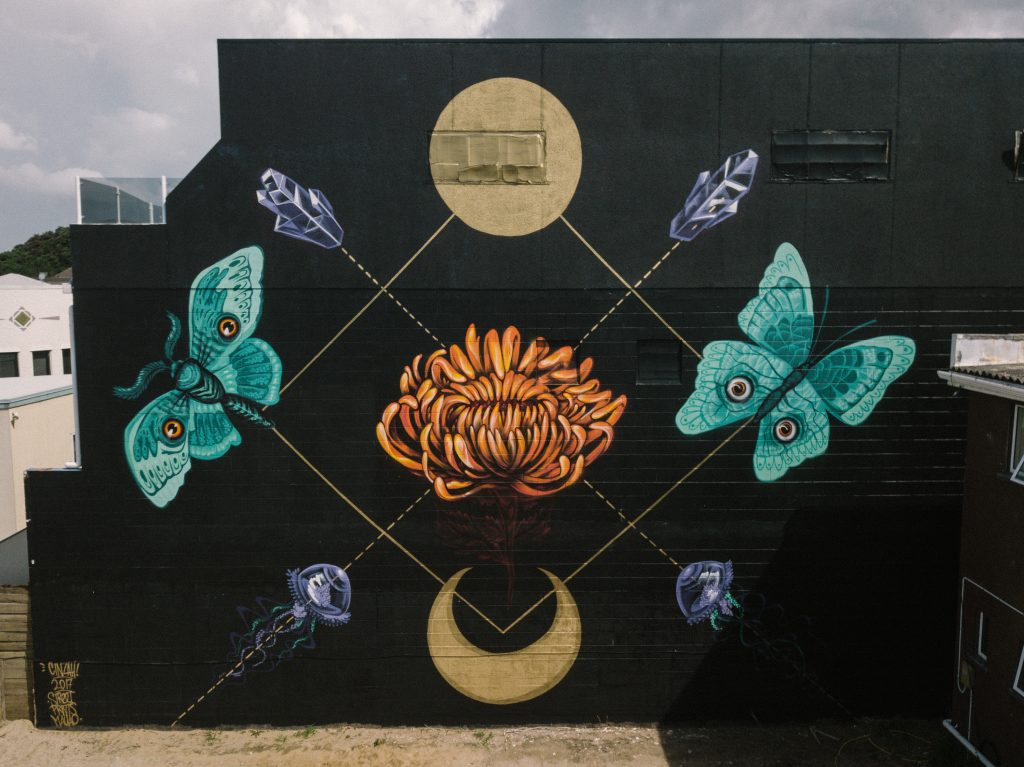
A lot of that comes down to public reception as well, right? Because it is generally easier to understand portraiture, and that human connection, I mean that’s why it has always been such a prominent theme. So, it’s not so much that it’s not possible when you’re dealing with graffiti letter-forms or abstraction, it’s just that possibly achieving that immediate level of understanding is more difficult…
Exactly, it is instantly recognizable or relatable, but art is all subjective, it is all open to the viewer in terms of the interpretation of the work. People make all sorts of calls as to what my work is about. Sometimes I paint things that are super obvious as I want to deliver a strong, direct message, other times it’s a little more expressive and abstract and that’s when you get all sorts of interesting responses to the work. In San Diego I painted a 35 metre long wall depicting local shark species, with a massive 100,000,000 type piece in the background, as this is the estimated number of sharks that get killed annually for the global finning trade. I couldn’t really be more upfront and obvious with this work but that was the intention, to be in the public’s face and to educate on the most basic level about this issue. I still get tagged and messaged all the time on social media about this work, people have spread the mural all around the net and it’s become a really strong conversation starter. The works I’ve created for these two festivals are definitely more abstract or symbolic with their meanings, a little more in line with some of my personal studio works and gallery based stuff.
It really shows the growing maturity of graffiti and street art muralism as public art: the ability to engage with and explore themes that haven’t necessarily been part of the culture previously, so this is allowing that growth and evolution to occur, even if it is challenging some of the bedrocks that people still hold dear…
Yeah, definitely. I feel like it adds a whole other level of substance behind the work, it doesn’t make it so much about the artist, it is about a greater purpose and you are addressing something bigger than yourself and it is not flying in on an ego trip and making work that you think is fucking rad and leaving. There’s a little bit more guts behind it, I think.
With Street Prints Ōtautahi, you are painting in New Brighton, you’ve got others painting in Lyttelton, other artists are dotted quite disparately around the central city, is it strange to be somewhat isolated when you are part of something that is essentially a shared experience as a group of artists? You told me about the amazing programme you put on for Sea Walls artists [including cultural excursions such as sailing on waka hourua with Te Matau a Maui, visits to significant local geographical and cultural landmarks, and even giving artists the chance to swim with sharks in shark tanks, giving them a personal connection with the often misunderstood animals], and with Street Prints Mauao, you all spent a night on Motiti Island staying with Mr G’s whanau, these types of experiences must be important elements now, especially with so many festivals and the need for a sense of legacy and identity…
I guess having an extra-curricular programme pulls everyone together. We are all staying at the same place, we’re eating together, we’re hanging out together, we catch up every evening, so you know there is a real community vibe with what we are doing here, but definitely, the map is kind of dotted out, I’m out here like you said, there’s a couple in Lyttelton, others are more central, which in some ways means you’re kind of pushed off the map, out to the side, although I’m really happy about it, its great the festival curators considered other areas that might kind of get left off the map, because of the geographic lay-out of the city. Talking to a lot of locals while I’m painting, they’ve been saying: ‘Oh you are out East side, this is great! Don’t forget about us out here!’ People have been saying it is really brilliant you are out here, because New Brighton needs a bit of love, it needs an uplift, so it’s all been really positive, and I don’t mind because it is a well-organised event, I’ve got my own wheels, so I don’t really feel like I’m miles out from everybody else. It’s a different vibe altogether from Tauranga. Mt Maunganui was a really close circuit, which creates a really seamless legacy of work after the festival, I’m not sure how this will hold up with the separation of the works…
Fill us in a little bit about what your piece. What is the concept? Paint us a picture with words…
The work that I’m painting has got a large moth that’s migrating towards a big golden sphere which could be read as the moon or the sun or whatever, but the concept I was thinking about was how to translate what has been happening here and the idea of the reconstruction of a city, with basically a new beginning, a new birth, a new undertaking or some sort of transformation. So, I was thinking about different ways to interpret that, I was thinking about the life cycles of insects, from eggs, or larvae, to caterpillar to pupa or chrysalis to adult, it’s more or less about transformation and the symbolism of having the perseverance to push forward, to follow the light side and keep progressing against all odds. Follow the light! (not Jesus, unless you’re into Jesus) I want the work to inspire hope… It sounds cheesy, super fucking cheesy! (Laughs)
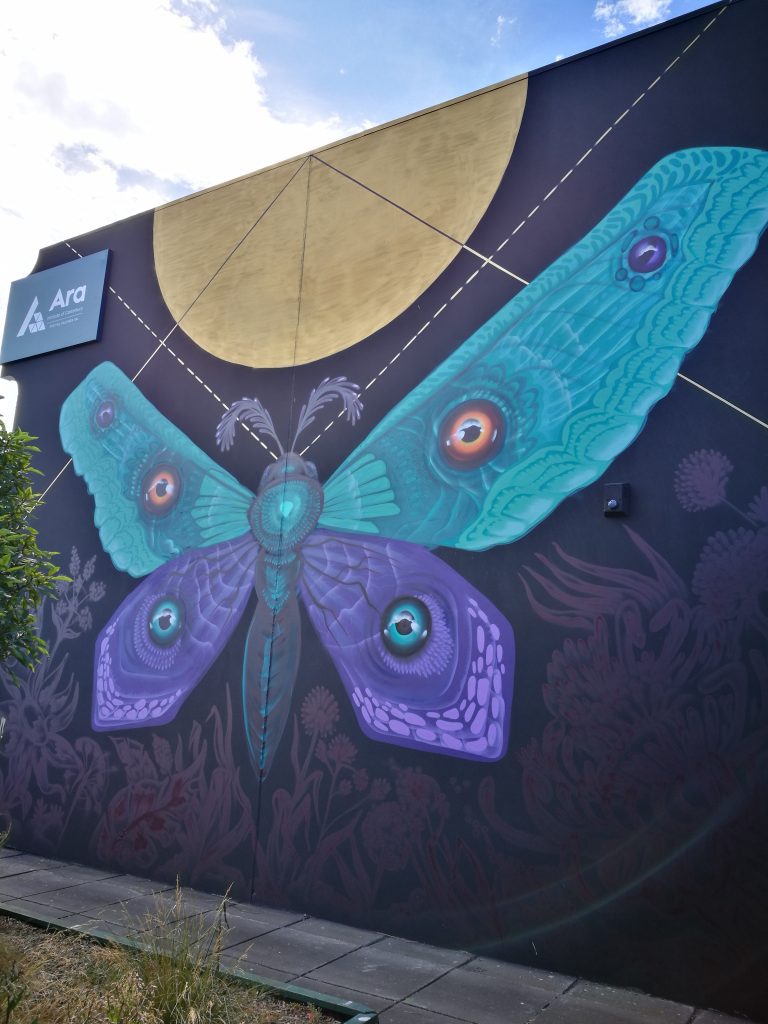
That’s the problem with painting with words, right?! (Laughs) Because the wall looks awesome…
Yeah, just go look at the picture! (Laughs)
In terms of your work more broadly, for me there is a storytelling element that is suggested through almost mystical or mythological imagery or iconography rather than overt narratives. For instance, the animals that you depict, like serpents, moths and even manta rays, for me, they have symbolic associations, but they don’t need to be explicit or obvious to the viewer, and when they are combined with the graphic, decorative style, including the use of gold, there’s a really suggestive quality to the imagery, is that a fair reflection?
I think you’re on the money there, I’m naturally really interested in art that has a narrative, is telling a story, often from different cultures’ folklore and mythology. My works are inspired by life, what ever is going on around me at the time, from physical as well as metaphysical experiences. Some of my works have an iconographic feel, possible due to the use of gold. In my gallery works I use 21 carat or 23 carat gold leaf and actually I’ve done some murals where I’ve used gold leaf in them as well, although due to budget and time this piece is basically straight fat gold chromies. I love the way gold catches the light, it has this other quality to it. I like the idea of creating icons, although I wouldn’t say my works are inspired by religious icons… because I’m not religious at all… (Laughs)
I see them as more elemental, more mysterious, almost ancient symbols that are open to interpretation. With that said, I can totally see them on illuminated manuscripts or something…
Yeah, that’s really awesome to hear because I am inspired by mythology and folklore, and I think it is really interesting to see how ancient civilisations have interpreted events throughout history. I like to weave my own little narrative, and create my own little plots within my work…
You mention your use of gold leaf in your studio works and of gold in different forms in your street works, do you feel like the relationship between street and studio is stronger than it was in the past, or are they still quite distinct for you personally?
Yeah, I feel like they are quite distinct, but at the same time they cross over a lot with subject matter, and lately more thematically as well. I think it is getting more and more seamless, heading in a direction where it is becoming more and more entangled between each other, and I do really want to explore different techniques that I use on my paper works, but on a large scale on walls, maybe limiting the colour palette or potentially going completely monochromatic and seeing how that translates to a large scale. I used to paint really loosely and really gesturally, like the piece I did back here in New Brighton in 2012 with all these loose splatters using Astro caps, Blaster caps and home made jobbies, just making a big fucking mess, and it is so much fun! And I guess over the years I’ve become more and more refined with the mural work and got tighter and tighter and tried to apply as much detail as I can, while holding a really strong graphic approach. I really enjoy painting the way I paint now, but at the same time it can become a little bit clinical, so the direction I’m heading probably brings a little bit more of the looseness and freedom of some of my ink washes and gestural studio works, potentially experimenting with using more acrylics. I mean I don’t think I’ll ever really stop using aerosols all together because I just love them as a medium, but from an environmental point of view, and for the body, they’re not the greatest…
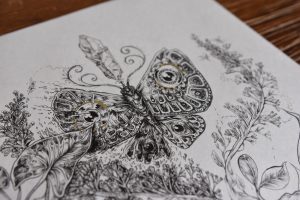
That’s a question a lot of artists are facing right? The paint companies are starting to explore how to combat that, but it is a difficult dilemma because there is a quality to aerosol painting that is really distinct and really attractive, especially when it forms such a strong part of the culture that has raised you.
Absolutely.
When you were here in 2012, you were in the midst of shooting Dregs, your documentary about the New Zealand street art scene. If you were making Dregs in 2018, how would it differ? Do you think the scene has changed dramatically?
It was definitely a snapshot of a time. It’s a little capsule as to where all the different artists were at that time, I mean, I haven’t watched it for years and I don’t know if I will watch it again! (Laughs) But, it was a really amazing experience to produce that documentary, looking back, it is really awesome to have that period and everybody’s views, practices, goals and aspirations documented historically for the New Zealand scene, before Dregs there wasn’t really anything produced in a feature length format. It is interesting looking back and seeing where all the individual artists were with their careers and their projections of their trajectories of where they wanted to go. I remember one of the questions we asked was: Where do you see yourself going in the next five to ten years? Looking back at each and every artist, they’ve pretty much all done it, and that’s really awesome to see! (Laughs) It would be really rad to do a part two, and visit the same lineup, get some proper funding and go and see all these artists internationally to celebrate where all the ‘Kiwis’ have got to…
It is interesting because if you look at the size of the culture in New Zealand, and even the sense of isolation that is still felt, the talent that’s developed here over a relatively brief period is incredibly high…
Absolutely, there’s such a strong scene in New Zealand, we’ve got some incredibly talented artists that are world class, and I think nowadays you’re seeing the rest of the world kind of realising that. You are getting a lot more of us that are working internationally, getting flown out for different events and so on, which is really awesome. When we were making Dregs, I had a turning point, I was internally fighting with the whole Kiwi tall poppy syndrome of ‘you don’t make it until you go overseas’, I had this huge desire to go and travel and to paint internationally, but at the same time I thought, fuck that! Why do you need to go to New York, or travel to these other places to prove yourself and to prove your talent back home? So I had this idea to flip that and to bring the rest of the world to New Zealand and I didn’t really seriously plan to do that you know, it was just something that I thought would be a really amazing thing to achieve, but I guess that thought stayed with me subconsciously as down the line I ended up being involved with PangeaSeed and bringing Sea Walls out here, and over the last two years we’ve brought some of the top contemporary muralists from around the world to New Zealand. Recently there have been a number of events that have brought amazing talent to our shores, including this event right now which has a really strong line up of national and international artists. We’re getting a lot more attention down on this side of the world…
In many ways, the world is, at least logistically, a smaller place, right? From a Christchurch point of view, to think back that the likes of Jorge Rodriguez-Gerada, Tilt, Buff Monster, Sofles, all these artists that you see in book and magazine pages, have all visited the city is amazing, but in many ways, you appreciate that they are just normal people who came up in the same way. And in that way New Zealand is an attractive place to come, because I imagine a lot of them didn’t expect to end up here when they started painting in the streets…
Exactly. When I started out there was no way I ever imagined I would have been to the places I’ve been with my art, and it still blows my mind, I’m incredibly grateful for the opportunities that have come about my way, and like you said, vice-versa, having these guys come down here and be involved, and meeting these guys and you’re completely right, everybody’s just normal, awesome, regular dudes that are doing the exact same things we’re doing but on the other side of the world. For them, New Zealand is this remote, isolated, exotic island nation at the bottom of the world that a lot of people would really love to visit, so to throw them that opportunity, it’s just as exciting as it is for us to head to America or the Caribbean, or to Europe or whatever…
To finish, there is one question I’m obliged to ask, just to keep up a tradition you started: Potato or Kumara?
Argghhh! It’s still kumara man! Haha, I had forgotten about that question! Awesome!
Cheers Cinzah!
Check out more of Cinzah’s varied projects:
MrCinzah on Instagram
Sea Walls Napier 2017 – https://vimeo.com/216788917
Sea Walls Napier 2016 – https://vimeo.com/172784145
Sea Walls Mexico 2014 – https://vimeo.com/102981926


